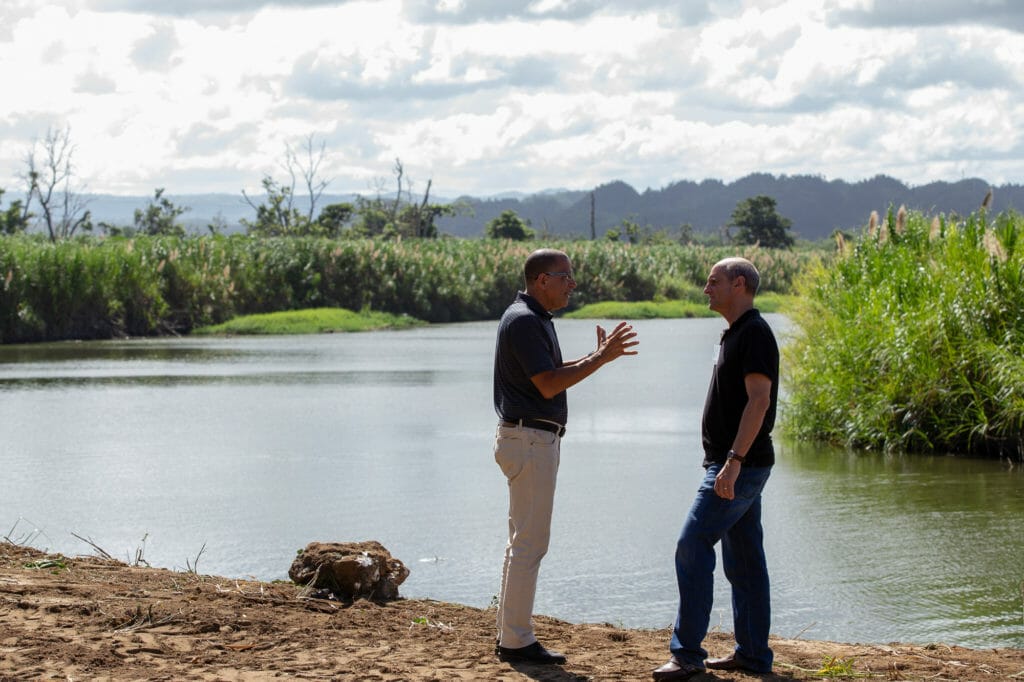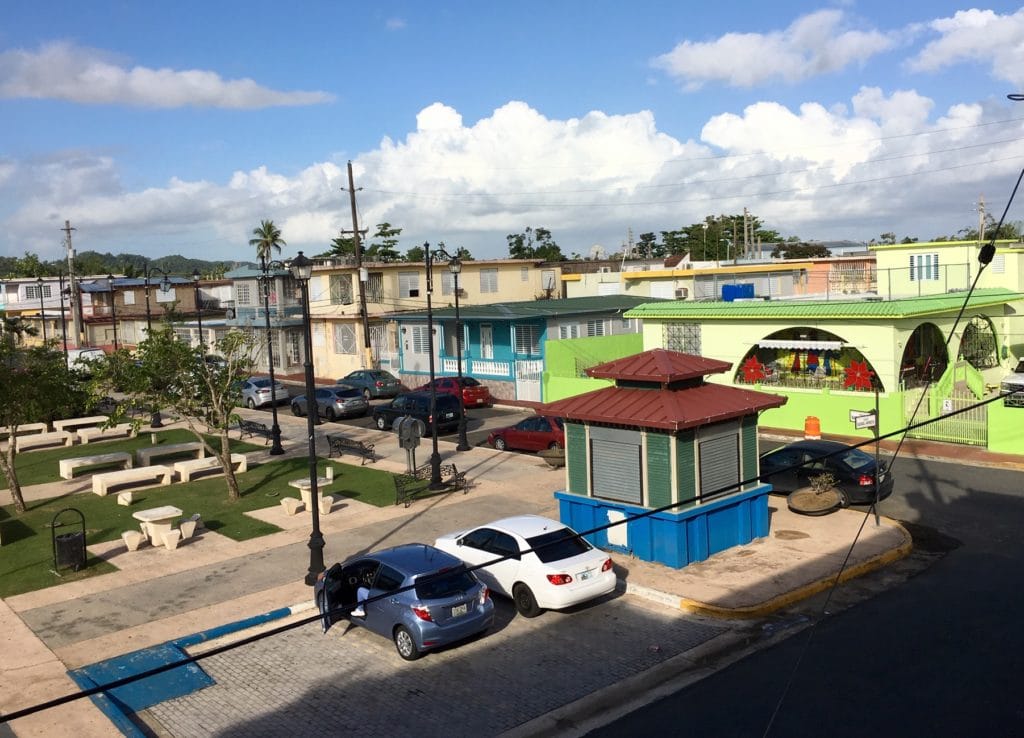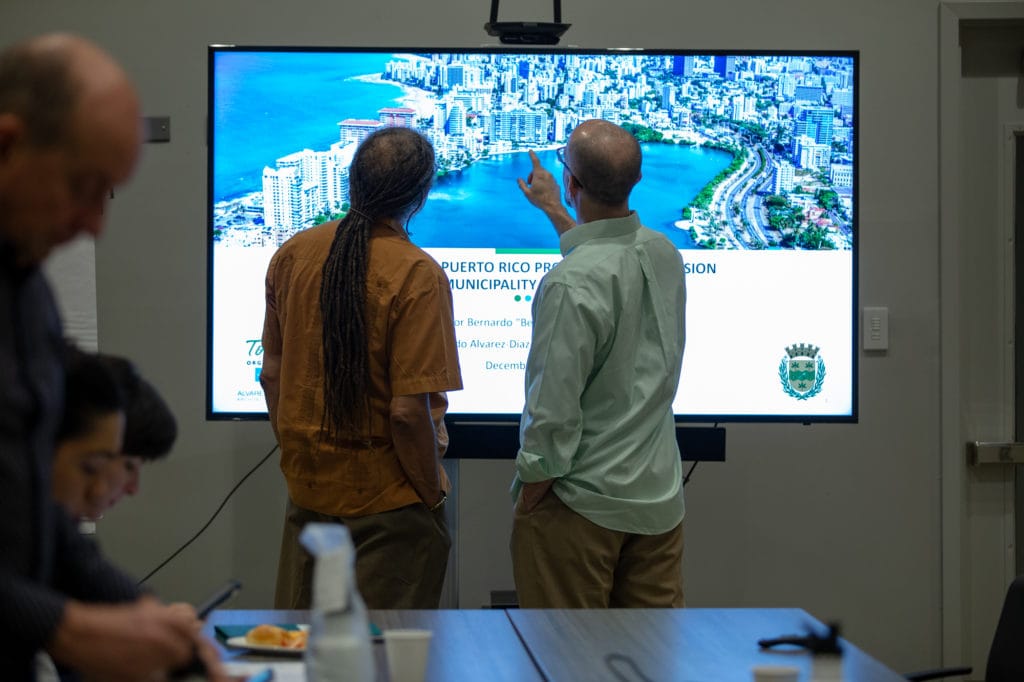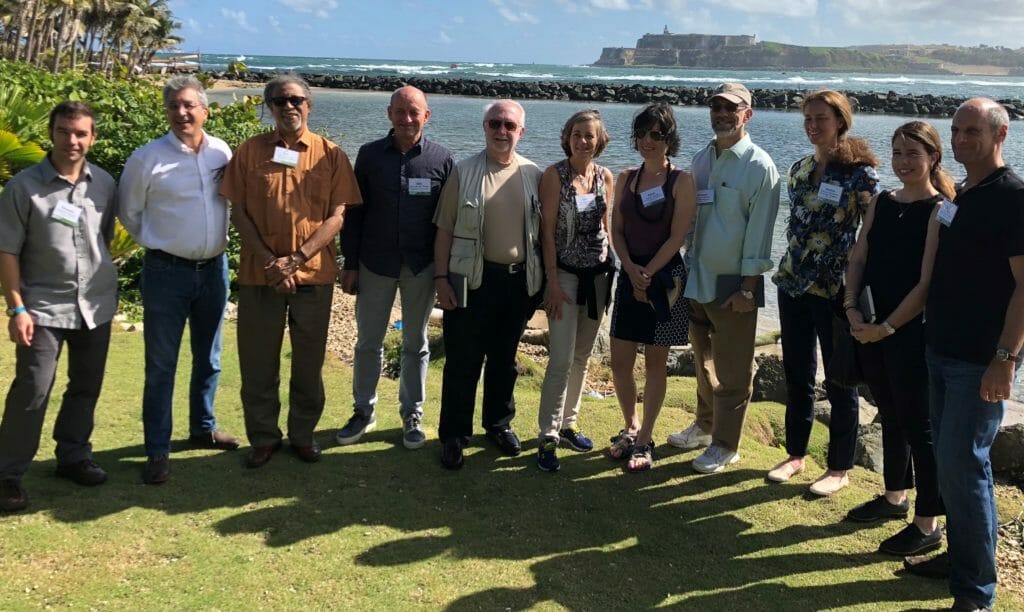Top Story
Date: December 2-7, 2018
Location: Toa Baja, Puerto Rico
Sponsor: Municipality of Toa Baja, Puerto Rico
Supported By: The Kresge Foundation; Alvarez-Diaz & Villalon; ULI Southeast Florida and the Caribbean
Subject Area: Social, Economic, and Physical Resilience
Panel Chair: James (Jim) DeFrancia, Principal, Lowe Enterprises
Panel Vice-Chair: Sarah Sieloff, Executive Director, Center for Creative Land Recycling
Background and Panel Scope
Located in the heart of the Caribbean, Puerto Rico is vulnerable to many climate related risks, from coastal storms and hurricanes, to flooding and earthquakes. In addition to this physical vulnerability, most of Puerto Rico is in economic decline, with a long-term recession that began in 2006. Further complicating matters, the government of the Commonwealth of Puerto Rico entered Chapter 3 bankruptcy proceedings in the spring of 2017 and has around $70 billion in outstanding debt.
With the support of The Kresge Foundation, a team of ULI Advisory Services Panelists traveled to the Municipality of Toa Baja, Puerto Rico, to provide expert advice on enhancing recovery efforts after the catastrophic and deadly 2017 Hurricane Maria. The panelists provided recommendations to aid short- and long-term economic growth and resilient development.

Tom Roth and Toa Baja mayor “Betito” Marquez in front of the river bend along La Plata river , which floods frequently (ULI).
The municipality of Toa Baja is a microcosm of the Commonwealth of Puerto Rico, in terms of its climate risks, environmental vulnerabilities, and economic condition. Toa Baja, whose name means “low farm”, is in a low elevation area that is adjacent to El Rio La Plata, the Commonwealth’s most active river. In the last three decades, the municipality has suffered from extreme flooding approximately once every six years, due its low coastal elevation and proximity to the river.
The municipality’s economy suffered greatly from the hurricane, highlighted by a loss of economic activity and infrastructural damages amounting to more than $1.3 billion, including over $400 million in damages to personal residential units and assets.
Located in the western San Juan metro area, Toa Baja has over 80,000 residents, about a third of whom are classified as low income. One of the most significant challenges that the municipality faces is a lack of available housing to meet the market’s demands due to displaced persons from Hurricane Maria. Due to abandonment after weather events and homes still in need of repair, there is an estimated stock of 6,000 vacant units.

Aerial view of the homes in Toa Baja (Bob van der Zande)
The Panel’s Assignment
The panelists were tasked with identifying how Toa Baja can better prepare for extreme weather events, and how the municipality can enhance social, economic, and climate resilience through investments, partnerships, and land development processes.
The panel was asked the following questions:
- What is Toa Baja’s competitive advantage regionally, island-wide, nationally and internationally? What is Toa Baja’s economic drivers?
- How should the municipality leverage these competitive advantages and economic drivers?
- What role does land use and real estate play in leveraging these items?
- How can Toa Baja be more prepared for extreme weather, including future hurricanes, storm surge and flooding? What action s can be taken by the city, individual households, local businesses, and the real estate community?
- What are the national and man-made features that impact Toa Baja’s ability to bounce-back form extreme storm events and other risks? And are there specific geographic locations that provide the municipality with a supply of land to meet their long term economic and housing goals while minimizing risk in terms of flooding, tsunami impact, etc.?
- What strategies could be implemented to enhance resilience at the building scale and at the scale of the community, and how can these be funded and implemented?
- How can Toa Baja ensure that all residents, of different incomes and backgrounds, benefit from ad have access to investments in resilience and preparedness for extreme events? How can Toa Baja leverage the partnerships and funding opportunities available after Maria to enhance resilience and improve preparedness for future events?
- How can Toa Baja organize and implement a standard or protocol for a new land development process? How should the municipality address land tenancy for formal and informal properties, public private partnerships, and tax structure, within this process?

Don Edwards and Michael Bloom study a slide prior to a briefing with the municipality (ULI).
Key Recommendations and Takeaways
Following a week of briefings, study tours, and community stakeholder interviews, the panel delivered strategic recommendations to enhance the social, physical, and economic resilience of the municipality of Toa Baja. The panel’s recommendations are as follows:
Position the municipality to receive CDBG-DR funds by prioritizing “ready-to-go” projects and establishing strategic partnerships among the community and the local federal governments. The panel encourages that Toa Baja pursues HUD technical assistance funding to advise on economic redevelopment opportunities. By doing so, the panel believes that Toa Baja will build credibility to position itself to compete for and receive earmarked funds that are available to address redevelopment and disaster recovery. By demonstrating a readiness to deliver projects through thoughtful and methodological approaches, Toa Baja can kick start an impact redevelopment strategy.
Identify development zones with higher elevation and incentivize developers to deliver projects in those areas. The municipality of Toa Baja should prepare short, medium, and long- term plans that will create opportunities to support catalytic development projects that are on higher elevation. Supporting these developments can help Toa Baja respond to critical housing demand while positioning the municipality for sustainable economic growth.
Organize and empower residents to build social capacity. The panel recognizes that communication, community engagement, and consensus are key building blocks to achieve a strong civic infrastructure. The panel recommends that the municipality leadership should target their focus on preparing and enabling residents to rebuild and recover as a community. The panel suggests starting a program to help residents fill out applications to receive aid in rebuilding or relocation, and help resident learn how to better prepare for storms and other risks together. A strong civic infrastructure will encourage the community to collectively to prepare itself and bounce back in a way unique to their community.
Designate a Municipal Resilience Liaison to advocate for funding from Commonwealth and National sources as well as communicate with community leaders and representatives. The panel recommends designating a Liaison within the municipality’s organizational structure to bridge communication between community affairs officers and municipal and commonwealth leadership. This role would enhance organizational alignment by prioritizing and advocating for on the ground needs, supporting public private partnerships, and identifying other sources of funding.
Incorporate nature-based design systems and recreational opportunities into the Rio de La Plata canalization project. The original Rio de la Plata canalization project was devised as a single purpose project – flood risk reduction – with grey infrastructure. The panelists recommend designing and implementing the project with nature-based design concepts and recreational opportunities to activate the waterfront while offering the same level of flood protection.
Prioritize code compliance among new and existing construction. The panel advocates for more intensive code enforcement to make sure that all new construction is code compliant. The panel also recommends a program to update existing structures to reach compliance. The panel identified funds available to increase Toa Baja’s number of code-enforcement inspectors, which would include the training of new officers, partnerships with community organizations, promoting cross-agency coordination, and the implementation of a penalty for non-compliance.
Invest and strengthen electrical infrastructure in Toa Baja. The panel recommends fortifying electrical infrastructure throughout the municipality, as interruptions in services lasted several months post Hurricane Maria. The panel encourages implementing energy efficiency practices, demand response mechanisms, and renewable energy deployment in the municipal government and at community scale. A reliable energy system would support redevelopment and potentially attract new economic opportunities.
As a microcosm of economic and resilience challenges faced at the Commonwealth level, Toa Baja can implement social, physical, and economic strategies that may be replicable across the Commonwealth to enhance overall resilience.

ULI panelists during the panel week in Toa Baja, Puerto Rico (Jacqueline Canales).